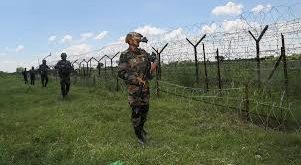Introduction to digital transformation in the Indian Army
In the fast-paced world of modern warfare, adaptability and efficiency are key. The Indian Army has embraced digital transformation to revolutionize its logistical operations, paving the way for enhanced effectiveness and streamlined processes. Let’s delve into how cutting-edge technology is reshaping the logistical landscape within one of the largest armies in the world.
Examples of digital transformations implemented in logistical operations
The Indian Army has embraced digital transformation to enhance its logistical operations. One significant example is the implementation of GPS tracking systems in vehicles and equipment, allowing real-time monitoring of their locations and status. This technology enables efficient route planning and resource allocation, resulting in smoother supply chain management.
Another innovation is the use of cloud-based platforms for inventory management. By digitizing procurement processes and maintaining accurate stock records online, the Army can ensure timely replenishment of essential supplies while minimizing excess inventory costs.
Additionally, the adoption of data analytics tools has revolutionized decision-making in logistics. Through predictive analysis, commanders can anticipate demand trends, optimize resource utilization, and mitigate risks proactively.
Moreover, automation solutions like RFID tagging have streamlined warehousing operations by enabling automated inventory tracking and reducing manual errors significantly.
These digital transformations have modernized logistical operations within the Indian Army, enhancing efficiency and responsiveness to operational needs.
Positive impact on efficiency and effectiveness
The digital transformation in logistical operations within the Indian Army has brought about a significant positive impact on efficiency and effectiveness. By leveraging technology, tasks that used to be time-consuming and manual are now streamlined and automated. This has not only accelerated processes but also reduced errors and inefficiencies along the way.
Communication among different units has vastly improved with the implementation of digital tools, leading to better coordination and quicker decision-making. Real-time tracking of supplies and equipment ensures that resources are utilized optimally, ultimately enhancing operational readiness.
Moreover, data analytics plays a crucial role in forecasting needs accurately, allowing for proactive planning rather than reactive responses. The ability to gather insights from vast amounts of data enables commanders to make informed strategic choices swiftly.
Embracing digital solutions has revolutionized logistical operations in the Indian Army by enhancing efficiency, effectiveness, and overall preparedness for any mission or challenge that may arise.
Challenges faced during the implementation process
Implementing digital transformations in logistical operations within the Indian Army has come with its fair share of challenges. One significant hurdle faced during the implementation process is the need for extensive training and upskilling of personnel to effectively utilize new technologies. This requires time, resources, and a shift in mindset towards embracing change.
Additionally, ensuring seamless integration of various digital systems and platforms poses another challenge. Compatibility issues between different technologies can lead to inefficiencies if not addressed promptly. Moreover, cybersecurity concerns have become more pronounced as reliance on digital solutions increases. Safeguarding sensitive data from cyber threats demands robust security measures and constant vigilance.
Furthermore, resistance to change from some traditionalists within the organization can impede progress. Overcoming resistance and fostering a culture that values innovation are essential for successful digital transformation in logistical operations. Despite these challenges, the Indian Army is committed to overcoming them to enhance efficiency and effectiveness in its logistical processes.
Future plans for continued digital transformation
The Indian Army is not resting on its laurels when it comes to digital transformation in logistical operations. Looking ahead, there are ambitious plans to further enhance efficiency and effectiveness through the integration of advanced technologies.
One key focus is on leveraging artificial intelligence and machine learning algorithms to optimize supply chain management processes. By utilizing real-time data analytics, the Army aims to make more informed decisions and streamline logistics planning.
Moreover, advancements in Internet of Things (IoT) devices will play a crucial role in monitoring inventory levels, tracking shipments, and enhancing overall visibility across the supply chain. This proactive approach will help anticipate potential bottlenecks and ensure timely delivery of critical resources.
Additionally, investments in blockchain technology are being considered to enhance transparency, security, and traceability within the logistics network. By digitizing documentation processes and establishing secure decentralized ledgers, the Army can mitigate risks associated with fraud or tampering.
As technology continues to evolve rapidly, the Indian Army remains committed to staying at the forefront of digital innovation in logistical operations. With a clear roadmap for continued transformation, we can expect even greater efficiencies and operational excellence in the days ahead.
Comparison of current logistical operations to previous methods
Digital transformation has revolutionized the logistical operations in the Indian Army, significantly improving efficiency and effectiveness. In comparison to previous methods, where paperwork and manual processes were prevalent, the current digital systems have streamlined tasks and reduced human error.
Previously, tracking inventory and supplies was a tedious process that often led to delays and inaccuracies. With the implementation of digital tools like RFID technology and real-time tracking systems, logistics personnel can now monitor resources with precision and speed.
Communication between different units involved in logistical operations has also been enhanced through digital platforms, reducing miscommunication and ensuring timely delivery of essential supplies to troops on the ground.
The shift towards digitization has not only modernized logistical operations but also optimized resource allocation and increased operational readiness within the Indian Army.
Conclusion: Summary and potential for further improvements in the future
The digital transformation in logistical operations within the Indian Army has significantly enhanced efficiency and effectiveness. By leveraging technology and automation, tasks that once required extensive manual labor and time can now be completed swiftly and accurately. Despite challenges faced during implementation, such as resistance to change or cybersecurity concerns, the benefits outweigh the obstacles.
Looking ahead, there is vast potential for further improvements in the future. The Indian Army can continue to integrate advanced technologies like AI, IoT, and data analytics to optimize supply chain management, transportation logistics, inventory tracking, and more. By embracing continuous innovation and adaptation to evolving digital trends, logistical operations will become even more streamlined and agile.
The ongoing digital transformation journey in the Indian Army’s logistical operations showcases a commitment to modernization and readiness for future challenges. With a strategic focus on leveraging technology for operational excellence, the army is poised to set new standards of efficiency in defense logistics through innovation-driven solutions tailored to meet dynamic requirements on the battlefield.
 Anupama Watch Anupama Desi Serial Today Latest Video Episodes Online at Anupamastarplus.cam
Anupama Watch Anupama Desi Serial Today Latest Video Episodes Online at Anupamastarplus.cam






